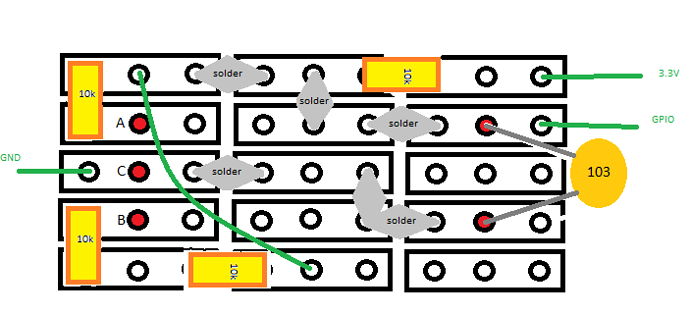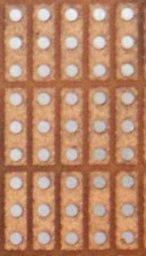I am all about the knob twiddling, but also about live playback of knob twiddling so although I am currently using pots I wanted to find a way to replace them with rotary encoders without losing extra pins.
I really am not an expert on circuits so I expect to be told its going to blow up any minute but it dawned on me that basically anything that needs multiple digital pins should be possible over a single analogue pin by dividing the voltage and reading that in software. Sooooo.......
I connected the rotary encoder so each pin gives a different analogue value, then decode that and feed it into a rotary encoder object, I figured out the analogue values by trial and error watching values change on my display.
Zero is the push button on the encoder, 32 and 64 are the two other pins, I set this by using 2k2 resistors.
I guess I need to do a circuit diagram to explain that, I will if anybody is interested.
The example above switches patches based on the value set by the rotary encoder.
Here is a video of switching between my 2 current patches :-
In case anybody actually makes use of this the files neeed to be compiled .bin files, they need to be in the root of the SD card and should be labeled with leading zeros, ie, patch000.bin, patch001.bin etc




